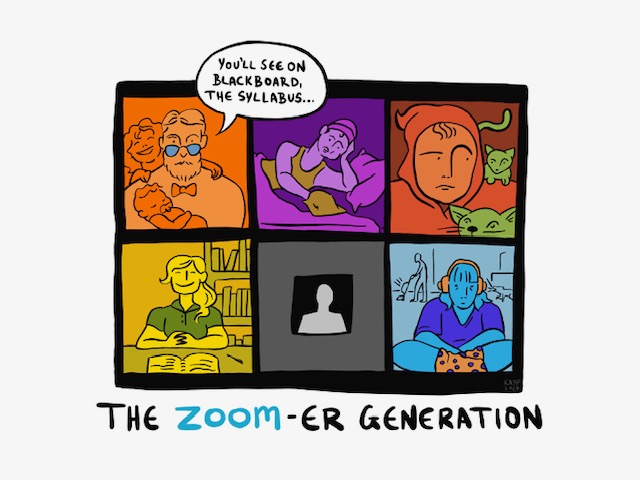In the wake of COVID-19, online classes for all students at the College of William and Mary have been different than what we expected when we chose our classes last November. STEM students expected to delve into their lab work to learn concepts hands-on. Fine arts students expected to be able to work with professional materials to which they’ve never had access outside of school. Humanities majors expected to have class discussions and bounce ideas off each other. The list goes on and on, but one thing is certain: our learning experience is completely different now, and the adjustment is different for each class.
Three of my classes have completely transitioned to live Zoom lectures and discussions, and one class is using it once a week. I am an English and marketing double major, and since this is a very English heavy semester for me, many of my classes are discussion-based.
The most challenging aspect of Zoom is learning the new rules of the classroom. Zoom creates an awkward environment for class participation because it can be difficult to see if someone is raising their hand depending on their background or where you are looking on the screen. Zoom does have a built in “raise hand” feature, but most classes don’t use it, and it would likely just lead to students forgetting to use it or professors forgetting to check the participant list to see the “hands.”
However, when professors adopt a more care-free, open environment where students don’t have to raise their hands, it creates some hesitation because it is much more difficult to read the room, or should I say rooms, over Zoom than in real life. It’s difficult not to talk over one another, so I have noticed discussion in some of my classes is much quieter and more limited than it was in person. When you’re sitting by yourself in a room, looking at a computer screen, it makes awkward students feel even more awkward when it comes to voicing their opinions.
Another challenging part of Zoom is simply internet connection. Not everyone has a great internet connection where they’re quarantined, and that can slow the entire class down, especially if that someone is the professor. Screens freeze, audio cuts out and screen sharing doesn’t go to plan, which all leads to anywhere between one to 10 minutes of interruption in class time. And then the readings and the essays and the projects are all still due at the same time as they would if we could actually use the class to its full potential.
I will say, though, I prefer Zoom much more than pre-recorded lectures. One of my professors is teaching entirely via YouTube and the one using Zoom once a week is using Panopto for pre-recorded lectures for the other two class meetings each week.
[poll id=”77″]My biggest problem with the pre-recorded lectures is simple: I like to be able to ask questions whenever they pop up. If my professor can keep going through his lecture and lose my understanding, and thus attention, more and more along the lecture, who is this system helping? Of course, professors are available via email or Blackboard, but the process of typing out a question makes it seem so important and official. It makes me second guess my questions and wonder if I can figure it out myself, or if it’s even worth knowing the answer at all.
There’s also something incredibly difficult mentally about starting a video for a pre-recorded lecture. It’s not like a live class, where you have to be online at a certain time. You can watch these lectures at any time during the day, week or semester, and you can bet that we all take advantage of that. This format is asking students to lose their motivation before they’ve even started. Do I want to learn calculus right now? No. So, I’ll put off watching the weekly lectures until the pressure from procrastination physically starts hurting me.
Both of these makeshift classrooms are less than ideal, but for my classes and my learning style, Zoom is far superior to pre-recorded lectures.
I want professors, teachers and any other type of leader during this pandemic to consider not only their own ease when choosing a platform, but also the convenience for the audience they’re trying to reach. In the case of professors and their students, it makes the most sense to teach in a manner in which the students will be able to succeed the easiest. Their job is educating their students, not making us fight for our sanity.
Email Alyssa Slovin at amslovin@email.wm.edu.

